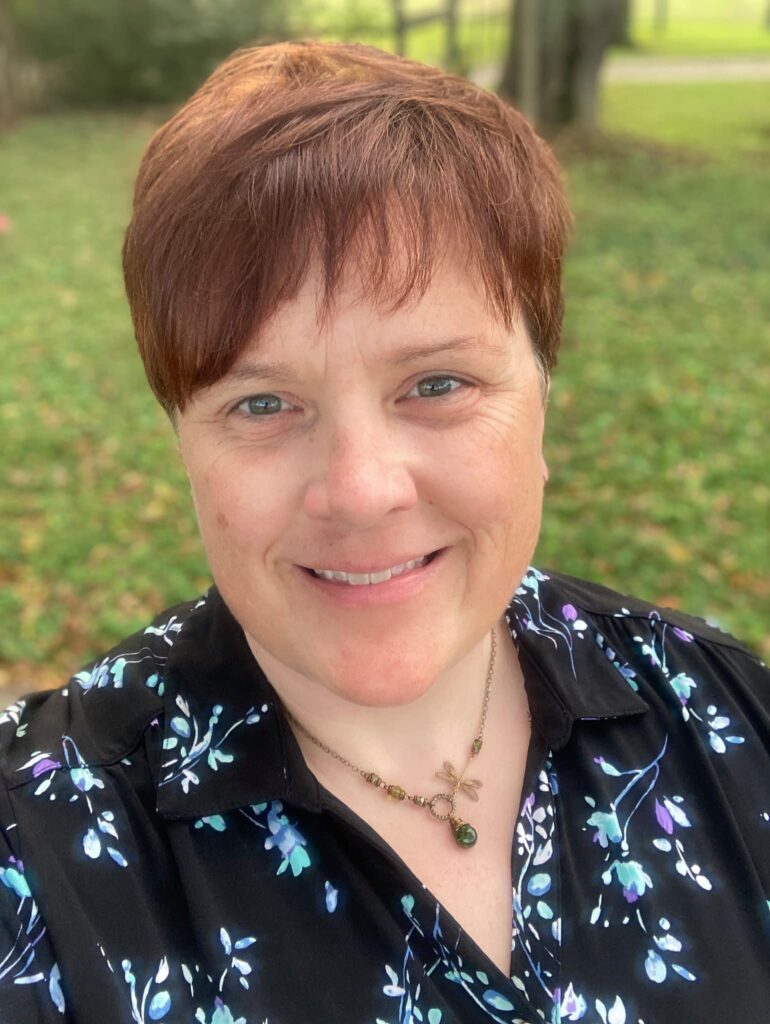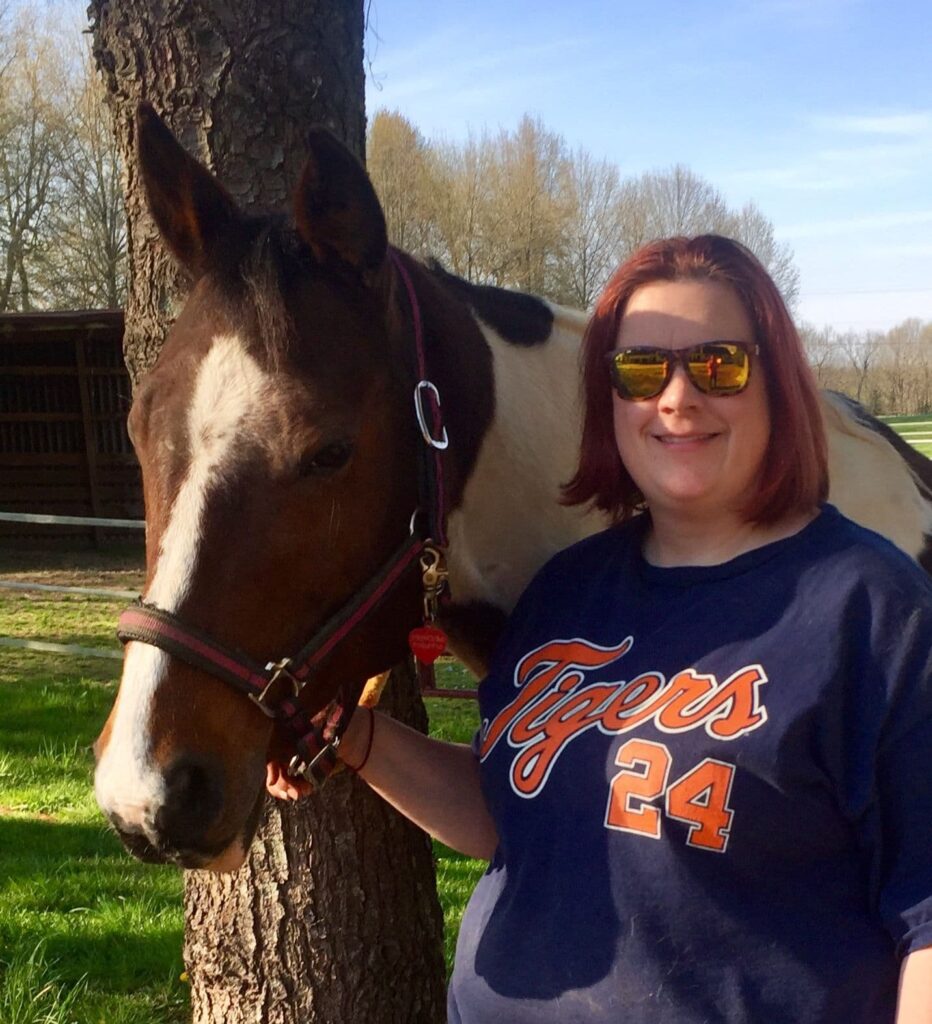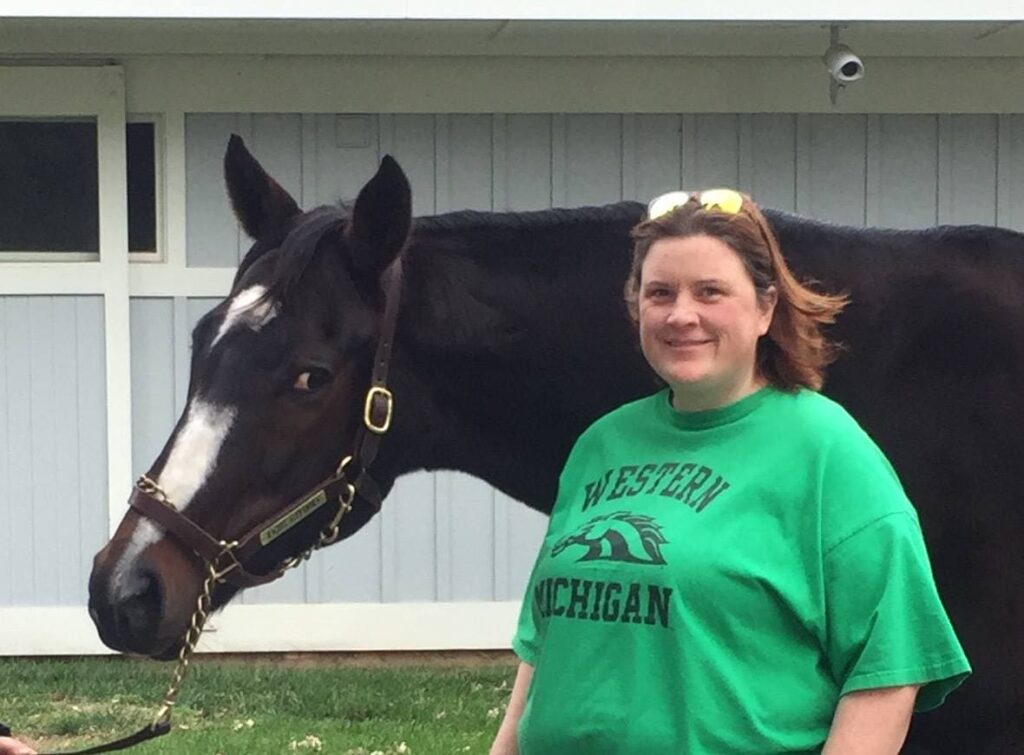As a community college, our job is to help guide our students through the complicated process of figuring out what is next for them. For many people that could mean becoming a nurse or early childhood educator or transferring to a four-year university. We always hope that each student can look back on their time on our campuses and be able to say it helped get them where they want to be.
Where it began for Cheryl Eriksen
Cheryl Eriksen says her time at Black Hawk College helped her prepare for what was next in her life. She recently returned to the East Campus for what she calls an extraordinary moment. After recently releasing a memoir titled “Follow me, Friend: A Memoir of Undiagnosed PTSD, and the Healing Power of the Horse-Human Relationship,” she held a book signing on the same campus where she developed an even stronger love for horses.

Eriksen is originally from Kalamazoo, MI, where she said she really wasn’t exposed to horses being from the city. It was a family vacation to Busch Gardens where she fell in love with horses after seeing a Clydesdale statue.
From there she got more into horses after she started riding lessons and eventually became a part of 4-H where she began showing horses. After high school, she knew she wanted to continue her education. She began looking for schools that offered an equestrian science program. She wanted a program that would be two years, and Black Hawk College East Campus had just what she was looking for.
During her time at the East Campus, she found a job helping look after and train horses.
“That is when I realized I have a talent for working with young horses,” she said. “The program at East Campus is really outstanding, even compared to four-year universities. You learn so much from the hands-on experience.”
The start of the recovery process
After graduating from Black Hawk College with her associate’s degree in Equestrian Science, Eriksen stayed in the Kewanee area for about six years, training horses. It was during this time of her life that she started to deal with symptoms of PTSD.
She would later learn that this PTSD was from a traumatic event that happened to her as a small child. “It’s one of the ways that children cope with trauma, to repress the memories. If you can forget about it then you don’t have to deal with it and that is what I did,” she said.

“The thing with trauma is that you can’t really forget it. It may not consciously be there but it will still inform every part of how you interact with the world,” she added.
The trauma manifested itself in many different ways while Eriksen was going to school and at the beginning of her career. She dealt with a lot of self-negativity and self-hatred. “Outwardly I appeared shy and unconfident. Inwardly it was just this inner struggle of just not knowing how to survive with what I was dealing with,” Eriksen said.
Her battle would come to a head when she had an accident with her own horse. “The trauma from that accident shook whatever memories were there loose. I could no longer hide the memories and had to deal with them,” Eriksen said.
The most significant shift in the battle with those feelings came when her horse Farletta started to act strange around her. “I would come into the barn and she would be excited to see me but then immediately get uncomfortable around me,” Eriksen said.
What’s next for Cheryl
Eriksen’s next step was going to talk to a counselor but not for herself at first. She wanted to figure out what she was doing to create the nervous feeling in Farletta and what she could do to improve it.
These conversations with the counselor were the beginning of her recovery process. She was finally uncovering the traumatic memories so that she could begin to overcome them.
The major breakthrough came when she decided to explain what she was dealing with to Farletta. “I didn’t necessarily believe that a horse can understand words but they understand our energy and intention. They can feel that,” Eriksen said.

This new understanding of how important relationships can be between people and their animals was why Eriksen became more interested in helping others recover.
Eriksen went on to get her bachelor’s and her master’s degree in social work. She spent a couple of years working at an equine therapy facility where she used her writing and speaking to help others understand and help with PTSD in themselves or someone they love.
The facility uses horses to help people cope with PTSD and gives them an outlet to begin the recovery process. In addition to that form of therapy, horses are used by physical, occupational, and speech therapy professionals.
“Hippotherapy basically means therapy that incorporates the use of a horse. Movements of the horse mimic the normal movement of the human pelvis during walking,” said Dianne Abels with the BHC Physical Therapist Assistant program.
BHC’s Physical Therapist Assistant students will have a chance to learn more about this type of therapy from two different facilities located within the Quad-City area.
As for Eriksen, she continues to study and learn new ways to use horses to help others. She says the response from people who have read her book is exactly why she wrote it.
For her, it was about finding the person who could relate to how she was feeling before she began her recovery process and giving them hope.
For more information:
Follow Me, Friend website